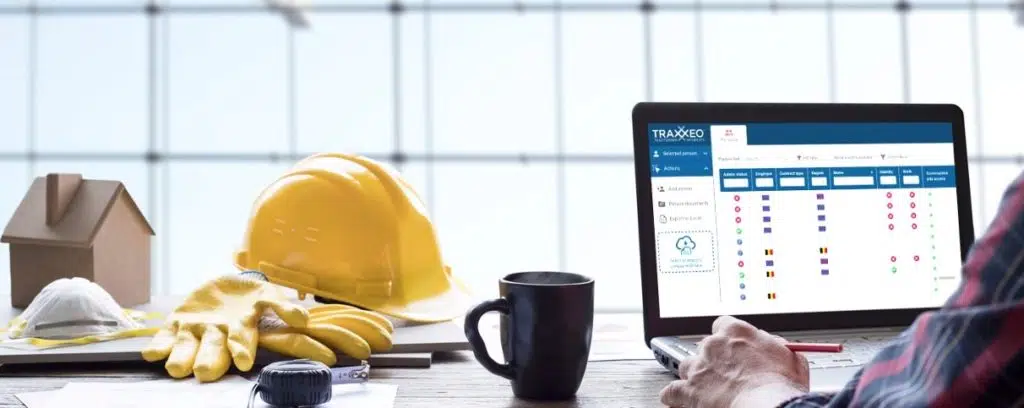Getting Seamless Job Distribution: Designer's Comprehensive Approach to Building Record Administration
One critical aspect commonly underestimated is the administration of building and construction files, which offers as the foundation of every project. As architects navigate the intricacies of layout, coordination, and implementation, an extensive method to record administration emerges as a cornerstone for accomplishing smooth task shipment.
Significance of Building File Monitoring
Effective construction document monitoring plays a critical function in guaranteeing project success by facilitating smooth interaction and organization throughout the building and construction procedure. By keeping precise and up-to-date building and construction records, engineers can successfully interact with professionals, subcontractors, and other stakeholders associated with the job. These papers act as a recommendation factor for all parties, guaranteeing that everybody is functioning from the exact same set of details and decreasing the likelihood of misconceptions or errors.
Furthermore, building and construction file monitoring helps engineers stay arranged by providing a central location for all project-related info, consisting of drawings, requirements, contracts, and document. When required, this company enables and streamlines the decision-making procedure for fast accessibility to critical job information. Additionally, correct document administration can improve task effectiveness, minimize costly delays, and inevitably result in the effective conclusion of building and construction projects. Engineers who prioritize building document administration established a solid structure for task success and demonstrate a dedication to delivering high-grade results.
Crucial Element for Reliable Documents

Given the critical duty that precise and organized building documents plays in ensuring project success, it is necessary to identify crucial elements that add to efficient paperwork monitoring. Succinct and clear interaction is paramount. All stakeholders should comprehend the paperwork demands and have the ability to accessibility and analyze the details conveniently. Second of all, developing standard templates and protocols ensures consistency across all project files. This includes calling conventions, documents structures, and revision control to stop mistakes and confusion. Regular reviews and updates are important to maintain documents existing and reflective of the task's progression. This practice helps determine any discrepancies or changes that require to be addressed promptly. Implementing a durable document monitoring system that allows for variation control, access constraints, and audit tracks substantially improves the company and safety and security of task paperwork. By incorporating these crucial elements right into building document monitoring methods, architects can enhance processes, minimize errors, and inevitably add to the successful distribution of projects.
Using Modern Technology for Document Organization
Leveraging sophisticated digital tools and software application systems contributes in enhancing the organization and ease of access of building paperwork. Architectural firms can enhance their paper administration procedures by applying specialized software program designed for the construction industry. These tools provide attributes such as variation control, cloud storage space, and collaborative editing abilities, making it possible for team members to deal with documents all at once and making sure everyone has access to the most up-to-date details.
One trick advantage of using technology for document organization is the ability to create a central database for all project-related documents. By keeping files in a protected digital environment, architects can easily look, retrieve, and share information with stakeholders, reducing the threat of version conflicts or misplaced documents. In addition, progressed software program remedies usually include metadata tagging and indexing capabilities, permitting individuals to categorize files efficiently and retrieve them quickly when needed.
Joint Approaches With Project Teams
To optimize job end results, architects should accept collaborative methods when collaborating with task teams to make sure seamless communication and sychronisation throughout the building and construction process. Cooperation with task teams is crucial for engineers to effectively take care of building tasks. construction document management. By promoting open interaction and teamwork amongst all stakeholders, designers can improve decision-making procedures, address possible issues proactively, and guarantee that everyone is straightened with the task goals
Designers should establish clear lines of interaction with engineers, service providers, clients, and other key staff member from the start of the task. Normal conferences, progress updates, and comments sessions ought to be arranged to maintain everybody notified and involved. Using collective job administration devices can likewise assist in real-time info sharing and paper cooperation, boosting openness and performance.

Finest Practices for Record Version Control

Final Thought
In final thought, reliable construction paper administration is essential for attaining seamless job distribution (construction document management). It is important for designers to apply best techniques in document monitoring to successfully browse the complexities of construction jobs.
Reliable building and construction paper administration plays an important role in making sure project success by promoting seamless communication and organization throughout the building procedure. Furthermore, appropriate record monitoring Get More Info can boost task performance, lower pricey hold-ups, and inevitably lead to the effective conclusion of building and construction tasks.To maximize task end results, architects must embrace collaborative methods when working with job groups to make sure smooth interaction and sychronisation throughout the building process. Cooperation with project groups is important for architects to properly take care of building and construction jobs.In the world of collective construction project monitoring, preserving exact control over paper versions stands as a vital method for ensuring task stability and cohesion.